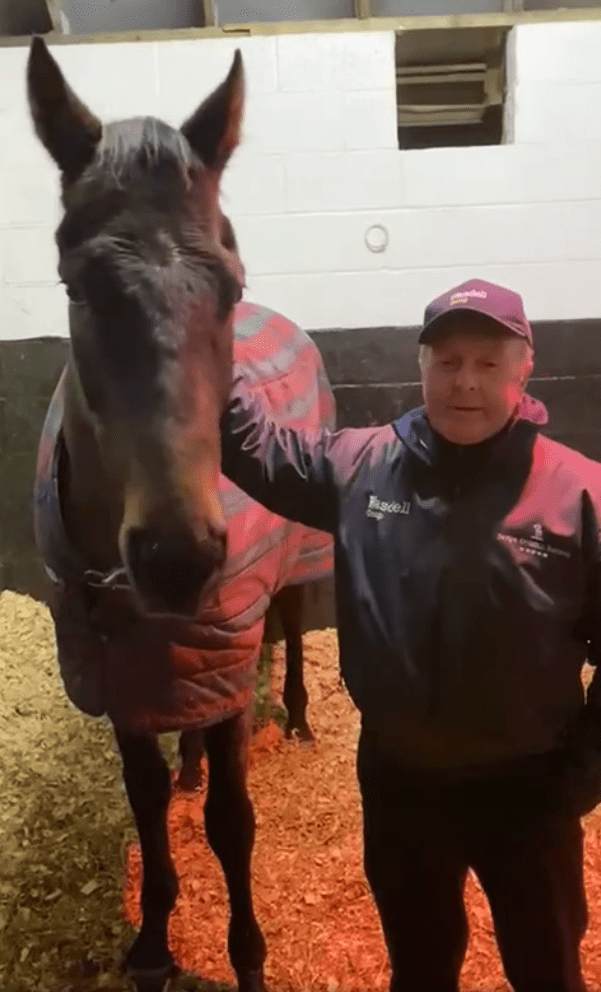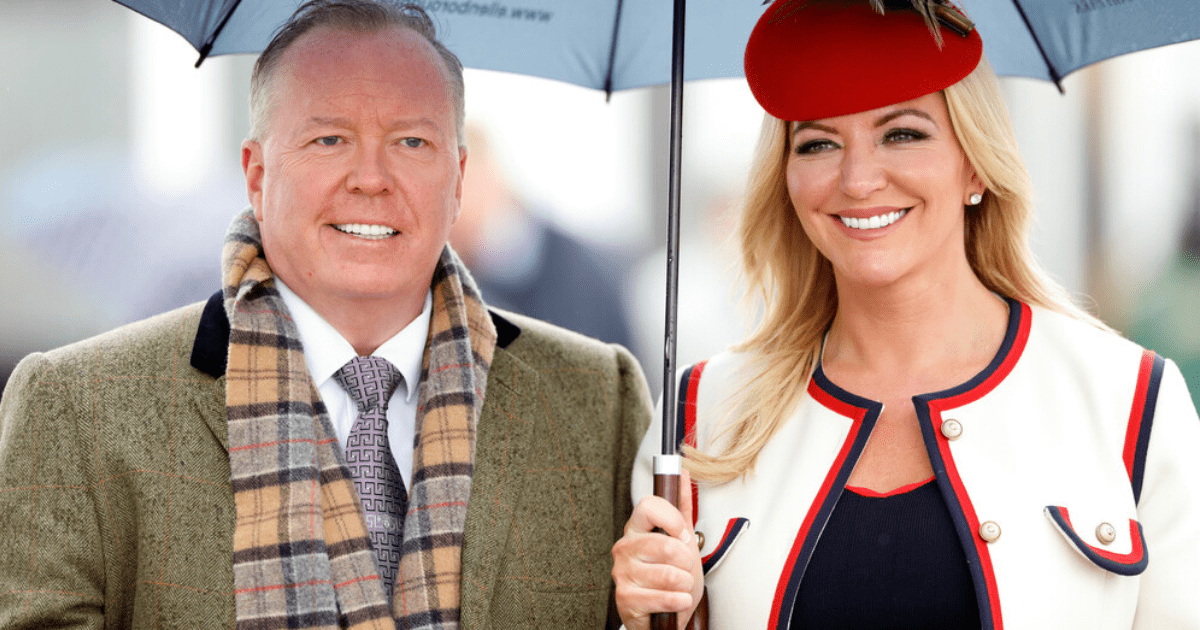Michelle Mone and husband have £75m assets frozen
The current favorite for the upcoming Grand National race, Monbeg Genius, may be prevented from running due to the frozen assets of his owner, Michelle Mone. Mone, a prominent figure in the fashion industry, had £75 million of assets frozen alongside her husband.
Investigation by British Horseracing Authority
The British Horseracing Authority is currently investigating whether Monbeg Genius falls under the list of assets affected by the freeze. Mone had purchased the horse as an £80,000 wedding gift for her husband, Doug Barrowman. Monbeg Genius is currently a 14-1 co-favorite with some bookmakers for the Grand National, a race that offers a prize of £500,000.
Potential Block from Running
If the horse is considered part of the frozen assets, racing officials could potentially block Monbeg Genius from participating in the race. Similar situations have occurred in the past, with owners being prevented from running their horses due to asset freezes.
Impressive Racing Record
Monbeg Genius, an eight-year-old gelding, has shown promising form on the racetrack. He finished third in the Ultima race at the Cheltenham Festival last year, a race that was won by the subsequent Grand National winner, Corach Rambler. The horse's trainer, Jonjo O'Neill, had previously stated that the Grand National had been the plan for Monbeg Genius ever since that race.

Legal Troubles for Mone and Barrowman
Mone and her husband are currently facing a National Crime Agency investigation into alleged fraud. The couple's assets, including properties and bank accounts, have been frozen or restrained by a court order. The allegations against them include conspiracy to defraud and bribery, which they deny.
It remains to be seen whether Monbeg Genius will be allowed to run in the Grand National, but the investigation into the frozen assets adds an extra layer of uncertainty to the horse's participation in the prestigious race.
Frequently Asked Questions
Are there different types of horse races in the UK?
There are several types of horse race in the UK. These include Flat racing, National Hunt racing (or jump racing), and other races. Flat racing is held over flat tracks that range from 5 furlongs up to 2 miles. National Hunt racing emphasizes horse speed and jumping abilities, with races such as steeplechases containing a series obstacles. There are many variations of these two broad categories. For example, handicaps, maidens and conditions races. Each with its own rules and criteria.
What is the role of a steward in horse racing?
Stewards are responsible for ensuring that all horse racing is conducted in a fair and legal manner, according to the racing rules. They have to supervise the conduct by jockeys or trainers along with other race personnel. Stewards have the power to issue penalties such as fines and suspensions in the case of rule violations.
How can the safety of riders and horses be maintained during a horse race?
In UK horse racing, the safety of horses and riders are of paramount importance. Stringent regulations are in place to ensure that racecourses meet high safety standards, including the condition of the tracks and the quality of the jumps. Horses receive health checks prior to and after races. Jocks are also required to wear protective gear like helmets and body guards. The sport also employs veterinarians and rapid response teams to handle any incident quickly and competently.
What does it mean when a horse is described as a ‘stayer’ in racing terms?
A’stayer horse’ excels when racing over long distances. Typically, these distances are beyond one mile and four furlongs. Stayers have to be able to run fast over long distances. Renowned stayers compete in long distance races like the Ascot Gold Cup.
What are the UK’s most prestigious horse races?
The United Kingdom hosts a number of acclaimed horse races that draw audiences from around the world. Among these, the most prestigious include the Royal Ascot, the Cheltenham Festival, the Grand National at Aintree, and The Epsom Derby. These events not only showcase the finest equine talent but also offer rich history and tradition, and have become social occasions with distinctive dress codes and royal patronage.
How do racehorses are bred and chosen for racing purposes?
Racehorses are usually bred with the specific intention of excelling on the racetrack. Breeders choose dams and sires with racing pedigrees to produce offspring who are fast, durable, and have a good temperament. Thoroughbreds tend to be associated with UK racing, and their lines are carefully tracked. Potential racehorses go through a process of selection that includes a pedigree assessment, physical conformation assessments and their performance in training.
Statistics
- The annual Cheltenham Festival has an economic impact of over £100 million for the local Gloucestershire economy.
- The Royal Ascot, held annually in June, draws crowds of 300,000 over its five-day meeting.
- Horse racing contributes an estimated £3.7 billion to the UK economy directly and indirectly each year.
- British racing oversees around 1,500 fixtures annually across its 59 racecourses.
- Around 14,000 thoroughbred foals are born each year in the UK with the goal of becoming top racehorses.
- Approximately 6 million people attend horse racing events in the UK each year, making it the second most popular spectator sport in the country.
External Links
racingpost.com
thejockeyclub.co.uk
thejockeyclub.co.uk
britishhorseracing.com
thejockeyclub.co.uk
racingtv.com
How To
Understanding Horse Racing Odds
To make informed wagers, it is crucial to know the horse racing odds. Odds are the probabilities of an outcome and they determine potential winnings. In the UK, odds have traditionally been displayed as fractions. For example, 5/1 means that, for every PS1 bet, the winner could earn PS5. Remember that odds represent the bookmaker’s assessment of the chances a horse has, which may be influenced based on form, market conditions and sentiment. To calculate the return on your investment, multiply the stake by the numerator number (the top number), and then add it to your original stake.

